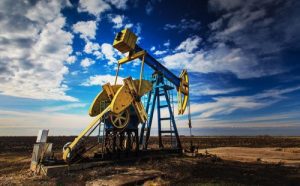In this article from the Nikan West company the Gilsonite producer in Iran, we will briefly review two sources of pollution in adverse effects of drilling mud on the environment in oil wells, namely drilling mud and logs removed by drilling mud.
Adverse effects of drilling mud on the environment
The application of drilling deep wells in the oil and gas industry is very extensive. Annually, the old oil and gas fields are expanded and new fields are opened; So that human beings can extract the fuel they need from the heart of the earth.
The drilling industry of these wells may cause damage to the environment in various ways. Because there are oil wells on land and at sea; The extent of the spread of these contaminants in the soil and climate can also be investigated. One of the causes of environmental pollution in this industry is drilling mud or drilling fluids.

Unfortunately, improper discharge of drilling mud waste and stumps released by it into the environment is the most important cause of these pollutants. The spread of such pollutants can have different economic, political and cultural effects depending on the spread environment.
Imagine that on a beach where a large part of the inhabitants are fishing; Pollution from the oil and gas drilling industry will cause water pollution and thus reduce fishing. Naturally, the increase in the unemployment rate will be followed by the economic and cultural problems caused by unemployment. Therefore, knowing the source of these contaminants is important and can be effective in finding a way to control them and reduce the adverse effects of drilling mud .
Environmental pollution of drilling rigs
Drilling logs come out of the well with drilling fluids. In fact, the task of drilling fluids is to remove drilling logs from deep wells; to make the well drilling process faster and easier. In oil wells, drilling rigs are usually low-density particles; In addition to causing damage and environmental pollution, they also reduce the properties of drilling fluid.
The output of drilling fluids in these wells includes about 10% of drilling logs and other oil contaminants. This fluid and its logs are combined with oil, water and other toxic chemicals on the way out, and its final outcome is extremely harmful to the environment.
The result of this output includes materials such as oil, phenol suspension solids, arsenic, chromium, cadmium, lead, mercury, natural radioactive materials and barium. These compounds may vary from well to well; however, all of them are toxic and are classified as environmental pollutants.
Biological disorders on the soil, toxic effects on plants, and health problems through the human food cycle are among the effects of these contaminants.
Environmental pollution of heavy metals drilling mud
Heavy metals are among the most dangerous environmental pollutants. These metals enter the drilling mud in two ways. Primarily if these metals are present in the drilling layers; They are likely to be combined with drilling mud and come out of the well. These metals are also sometimes used to add some properties to drilling mud. For example, by adding barium and mercury, the density of the mud can be controlled. Crude oil extracted from oil wells also contains a variety of heavy metals.

These pollutants can also be considered as drilling mud pollution in the environment. Fortunately, there are various methods and standards for pollution control; if we pay attention to them, the spread of pollution can be prevented to a large extent and its adverse effects on the environment can be reduced.
Six methods of chemical precipitation, ion exchange and membrane processes, coagulation and flocculation, chemical methods and adsorption with activated carbon are the most important methods for the separation of heavy metals.
Follow Nikan west gilsonite company the gilsonite producer in Iran, on Instagram social media.


